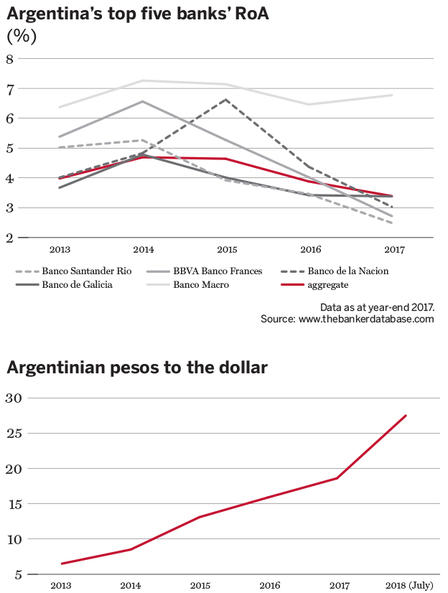Argentina’s ongoing crisis has sparked fears of emerging market contagion. Joy Macknight looks at the state of play of the country’s banks.
It has been a tough few weeks for Argentina. On August 29, president Mauricio Macri requested the early release of a $50bn bailout loan from the International Monetary Fund, sparking a collapse in international investor confidence. The peso plunged to a record low against the dollar, taking its devaluation to more than 50% this year. The central bank raised its interest rate to 60%.
While the crisis has come to a head in Latin America’s third largest economy, its banking sector has been under pressure for some time. In 2017, the industry posted the smallest pre-tax profits in five years.
Over the same period, Argentina’s banking sector has also seen a deterioration in return on assets (ROA) and return on capital, despite a 13% increase in assets on an aggregate scale. Of the top five banks by Tier 1 capital, the two foreign-owned subsidiaries – Banco Santander Rio and BBVA Banco Frances – are suffering most when it comes to ROA. The dramatic currency devaluation will make them suffer even more this year.



